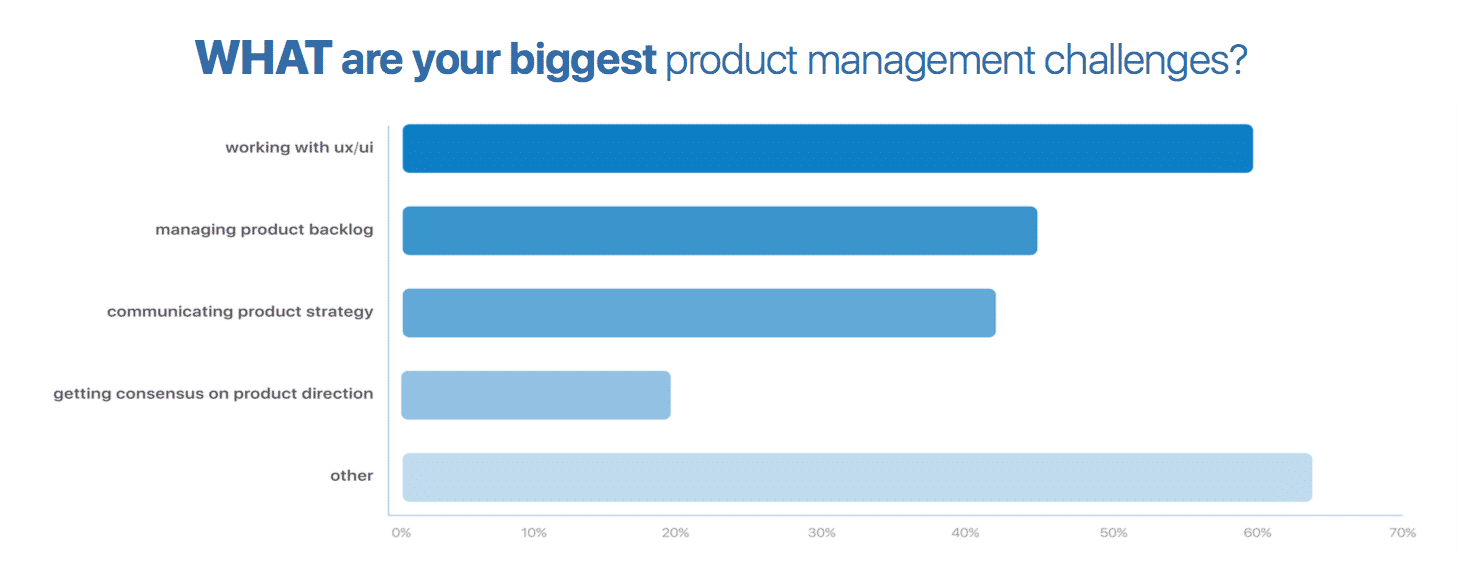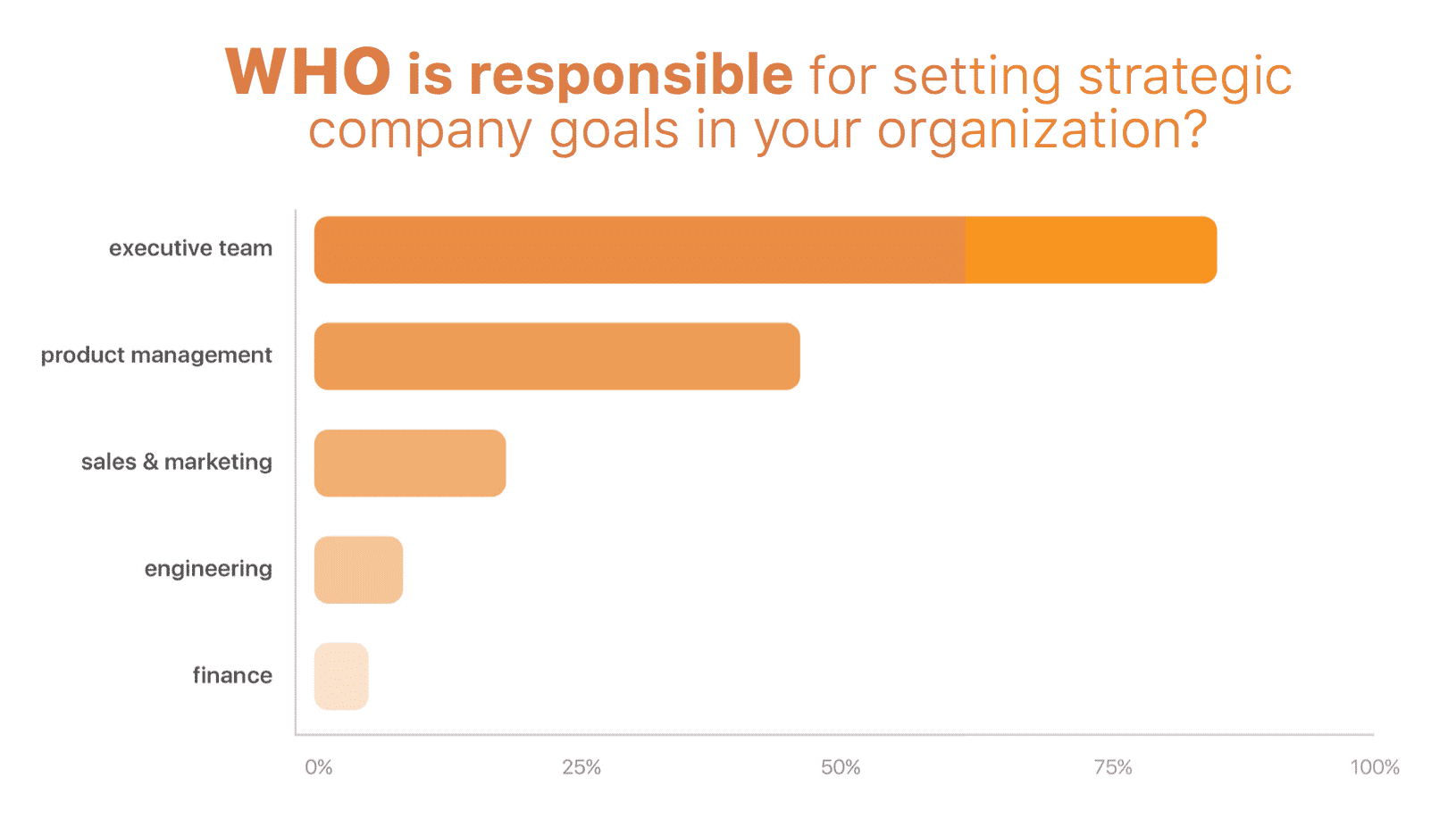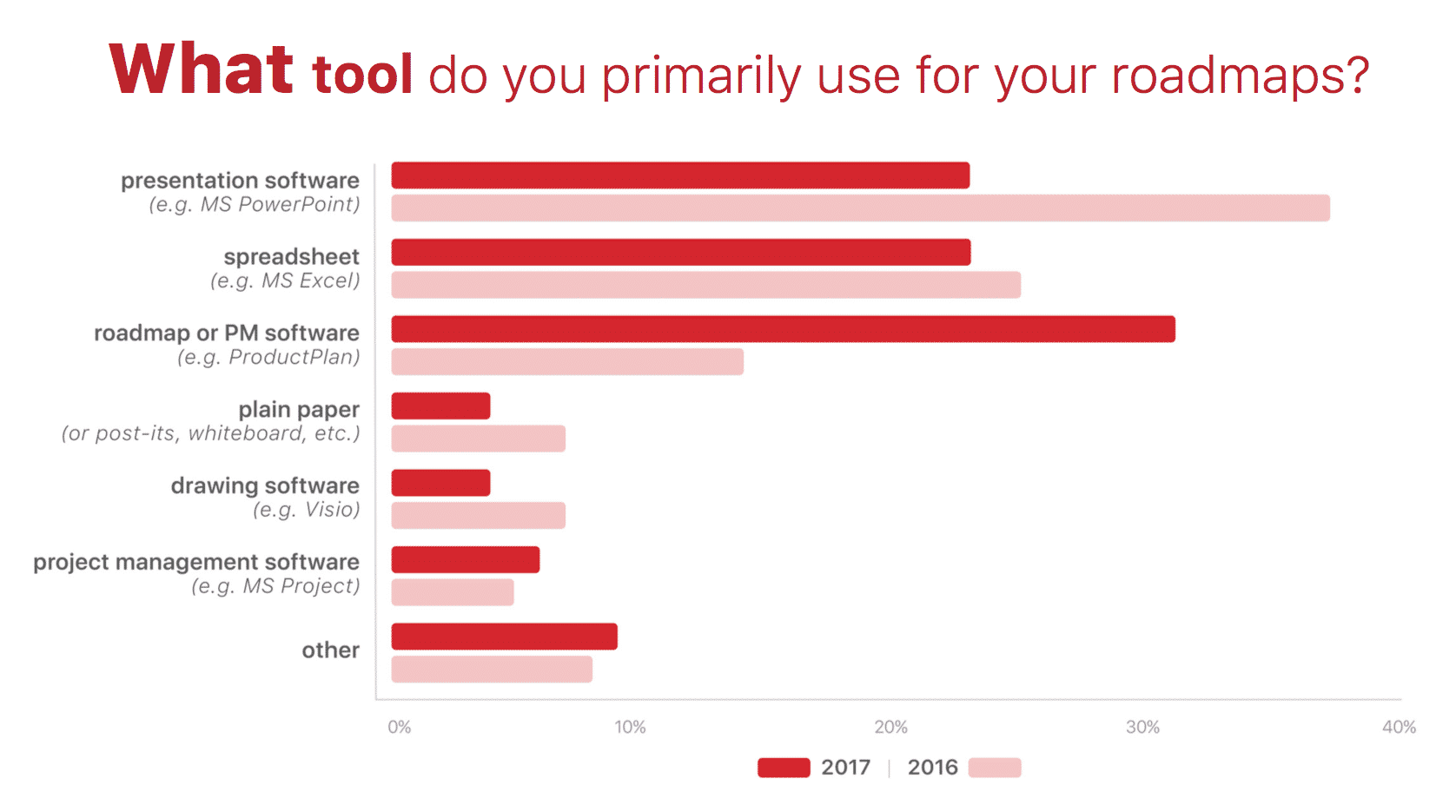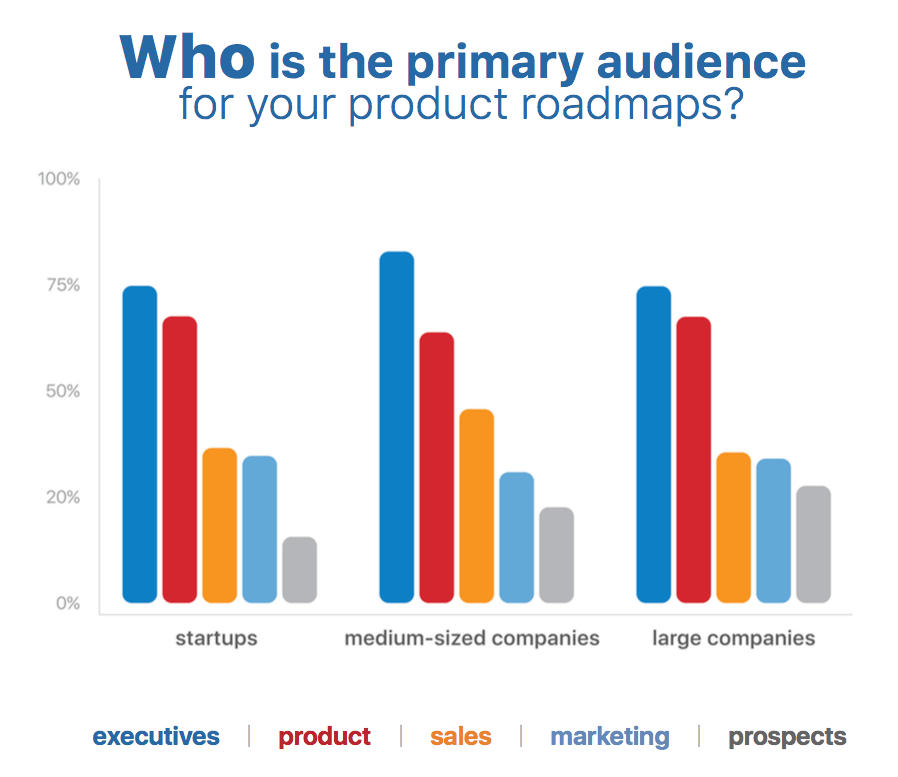ProductPlan asked product managers from hundreds of companies about their product planning process. We collected their responses and crunched the numbers to give you an exciting glimpse into the current state of product planning with our 2017 Product Planning Report.
The full report is broken down into five detailed chapters covering everything from planning and prioritizing product initiatives to communicating them on your product roadmap. We thought it would be helpful to cover some of the highlights here on the ProductPlan blog. Download the full report below to get even more product planning insights!
Overall Trends
One of the themes we noticed was a shift toward a more agile approach to product management. The days of massive requirements docs and static roadmaps are gone. A majority of the product managers we heard from update their roadmaps on a monthly basis—a far cry from a fixed, annual plan. Regardless of company size, industry, etc., product managers are changing and sharing their roadmaps more frequently.
Beyond dealing with faster product development cycles, product managers identified staying aligned with other teams, most notably UX/UI, as a major challenge. This makes sense, given the cross-functional nature of their role—part product owner, part consensus builder, part communicator, etc. It’s hard to keep everyone on the same page, but roadmaps can help!
“Keeping internal teams on the same page is our biggest challenge.”
— Product Manager at a medium-sized software company with 2-5 years of experience
Here at ProductPlan, we were happy to see that many product managers are adopting dedicated product roadmap software. For the 2017 Product Planning Survey, specialized roadmapping software surpassed PowerPoint, Excel, and other tools, as the primary way product managers are creating their roadmaps. As product managers continue to face the challenges involved in managing a constantly growing backlog, faster development cycles, and an increasing number of stakeholders, the benefits of roadmapping software are becoming more obvious.
Planning & Prioritizing
For product managers, planning and prioritization is as critical a part of the product development process as ever. Our survey findings indicated that companies that utilized some dedicated model, whether that was value vs. effort, the Kano Model, opportunity scoring, etc., were more likely to accomplish their strategic goals. This would suggest that it’s less about the specific planning and prioritization methodology used, and more about the team making these activities a critical part of their workflow.
Tweet This:
“Companies that use a dedicated roadmap prioritization model are more likely to accomplish their strategic goals.”
Our survey indicated that strategy is primarily set at the top of the organization, with 85% of companies stating that the executive team is responsible for setting strategic goals. Goals become more granular as they trickle down to functional teams, moving from executives, to product teams, and finally to sales, marketing, engineering, and finance. Though strategy starts at the top, we found that teams at all levels are more likely to meet their goals when they allot the time and resources required for effective planning and prioritization.
Another interesting detail around planning was that most teams used a 3-12 month timeline for strategic planning, signaling the need for more frequent roadmap updates and more dynamic product management tools. In short, product teams need flexible tools that can keep up with their organization’s pace of innovation.
Crafting the Plan
Part of our report focused on the methods, tools, and timelines companies are using to build and maintain their product plans and roadmaps. As mentioned above, the use of dedicated roadmapping software has doubled compared to our 2016 survey. Roadmapping-specific applications have overtaken PowerPoint as the primary way companies build and manage their product roadmaps, driven by the need to update and share their roadmaps more frequently.
On the other hand, our survey found that teams that use drawing tools to create roadmaps are more likely to be unsuccessful at meeting their goals compared to companies using other tools.
In terms of timing, significantly fewer roadmap owners updated their roadmaps on an annual basis, compared to 2016. The most popular cadence for updating roadmaps in 2017 was monthly, followed by quarterly, then weekly. We found that product managers who plan with timelines less than 6 months are more likely to meet their organizational goals. With this faster cadence for strategic updates, it’s not surprising that product managers are adopting more specialized, product-oriented apps.
Communicating the Plan
Beyond planning and prioritization, we asked our survey participants to let us know how they’re approaching the communication of their product strategy. For product managers, roadmaps ensure that teams within an organization are in alignment with high-level strategy. Many participants emphasized the importance of having a roadmap that is easily and quickly understood by non-product stakeholders.
Interestingly, the primary goals for roadmaps shift a bit depending on company size. According to our survey respondents, small and mid-market companies are mainly using product roadmaps as a means of prioritizing features and initiatives. Enterprise companies, on the other hand, are typically using roadmaps to communicate high-level strategy. With more functional teams and stakeholders, communication across Enterprise organizations becomes more challenging and more critical.
Despite their differing use cases, all three market segments—78% of respondents—identified the executive team as the primary audience for roadmaps.
Looking Forward
Product managers face a significant set of challenges moving forward. Faster and faster product cycles. Continuous development. Competition. Market shifts. Looking ahead, success seems to hinge on adopting a more dynamic and adaptive approach to product management. At the Enterprise level specifically, product managers face more stakeholders, geographically distributed teams, and other concerns for security, seamless integration, etc. These factors, coupled with multiple product lines, makes having a single, standardized process around product strategy and communication crucial.
Thank you to all of our survey respondents for their participation. Stay tuned for the next survey participation request in the coming months!
Click here to view and download the full 2017 Product Planning Report.
How do our findings compare to your day-to-day experience as a Product Manager? Please share your thoughts in the comments section.







